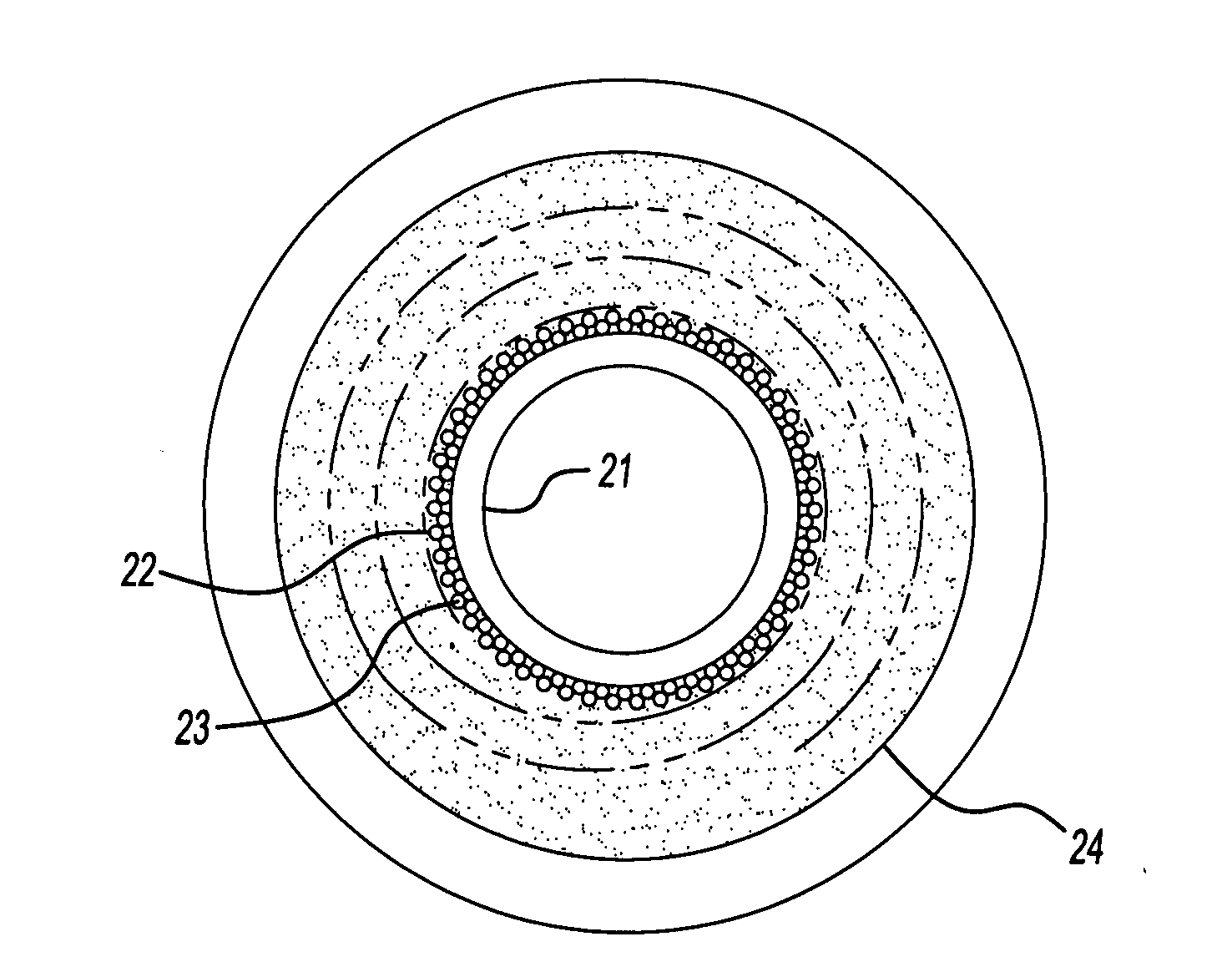Membrane module
a membrane module and fiber technology, applied in the field of hollow fiber membrane modules, can solve the problems of increasing the amount of membrane used, increasing the operating cost of the module, increasing the lumen and shell side pressure, etc., and reducing the diameter and packing fraction of the module, reducing the amount of fiber within the tubesheet, and increasing the wind angle
- Summary
- Abstract
- Description
- Claims
- Application Information
AI Technical Summary
Benefits of technology
Problems solved by technology
Method used
Image
Examples
Embodiment Construction
[0035]The term “wind-angle” is defined with regard to the module in a horizontal position. With this reference the wind-angle X is defined as the angle at which the fiber is laid across the module with respect to the vertical axis. Fibers wound at a 90° wind-angle, for example, would be parallel and straight from end to end in the module such as shown in the aforementioned U.S. Pat. Nos. 6,585,808 and 6,616,735.
[0036]A “layer of fibers” is defined as those fiber(s) that are layed down in the operation of helically winding the fibers in going from one end of the module to the other end of the module. The return of the fibers to the first end would then constitute a separate layer of fiber.
[0037]The “core” is defined as a solid or hollow axially extending body of a desired cross-section. Although the core is sometimes illustrated herein as a hollow cylinder of circular cross-section, other cross-sections, such as square, elliptical, triangular, or the like, are well within the scope o...
PUM
| Property | Measurement | Unit |
|---|---|---|
| pressures | aaaaa | aaaaa |
| surface area | aaaaa | aaaaa |
| diameter | aaaaa | aaaaa |
Abstract
Description
Claims
Application Information
 Login to View More
Login to View More - R&D
- Intellectual Property
- Life Sciences
- Materials
- Tech Scout
- Unparalleled Data Quality
- Higher Quality Content
- 60% Fewer Hallucinations
Browse by: Latest US Patents, China's latest patents, Technical Efficacy Thesaurus, Application Domain, Technology Topic, Popular Technical Reports.
© 2025 PatSnap. All rights reserved.Legal|Privacy policy|Modern Slavery Act Transparency Statement|Sitemap|About US| Contact US: help@patsnap.com



